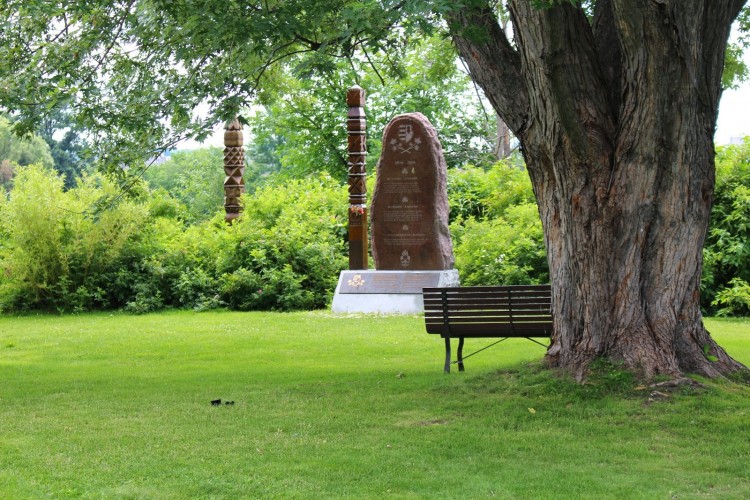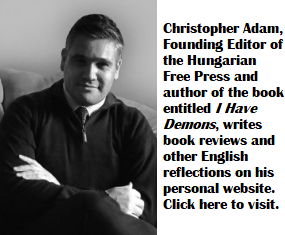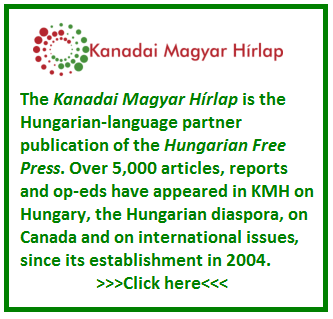Last Thursday, fifteen local Hungarians in Canada’s capital met at a “neutral” location to chart a course that would transform the small, but active local Hungarian community into one that is much more inclusive than it is now, welcoming a plurality of people, backgrounds, life experiences and views. This past Sunday’s Hungarian-language radio broadcast on CHIN 97.9 FM was a case in point of why a new-found openness is so very much needed, not just in Ottawa, but in all Hungarian diaspora communities. The weekly radio broadcast’s host, Judit Petényi, had produced an interview with a young Hungarian recipient of a Kőrösi Csoma scholarship, who as part of this Hungarian government program, was sent to Ottawa by Hungary’s Prime Minister’s Office to volunteer at the Ottawa Hungarian Community Centre, as well as among the Scouts and at the Hungarian School of Ottawa, which offers instruction once per week. The Kőrösi Csoma scholarship program costs over $2 million and out of 400 applicants, 100 young Hungarians were delegated by the Prime Minister’s Office to serve in diaspora communities throughout the world–from Canada and the United States, all the way to Australia, New Zealand and South Africa. The young scholarship recipient delegated to Ottawa, Kata Kovács, also has a responsibility to produce “reports” once per month, accompanied by photographs, of people and events in the local Hungarian community and then forward these directly to the Prime Minister’s Office, after they have been vetted by her local “mentor,” Tibor Lapohos, who happens to be the Vice President of the National Alliance of Hungarians in Canada, an openly pro-Orbán group supported by Budapest.
Ms. Petényi recorded an interview with Ms. Kovács and had planned to air it this past Sunday. Unfortunately, Ms. Kovács was not able to obtain permission from the Prime Minister’s Office to air the interview and as such, the host had no choice but to simply share some information about the program that she obtained through her own research. Since the Kőrösi Csoma program and the openly right-wing National Alliance of Hungarians in Canada are linked, she also raised some questions in her show on this organization, and hopes to conduct interviews on the group in the coming weeks. (Listen to the most recent radio broadcast here, in Hungarian. The relevant sections on the government program in question and on the National Alliance, start after the 10 minute mark. )
The lack of dialogue, the lack of respect for pluralism, little to no transparency and very tightly controlled messaging are all prominent features of how the Orbán government conducts itself, both in Hungary and abroad. I was very pleased to see how the Ottawa community radio broadcast has been pushing the envelope on this front, especially after Ms. Petényi started hosting the weekly show this past summer.
The cooperation between fifteen local Hungarians, comprised of current and former members of the Ottawa Hungarian Community Centre (OHCC), as well as Hungarians who are new to the community, is another important step in the direction of real dialogue and inclusion. It’s a grassroots initiative called the Hungarian Forum of Ottawa (Ottawai Magyar Fórum) and during the first meeting, a wide range of concerns were raised openly and respectfully, in an environment where everyone present felt comfortable expressing their views.
These included:
- The presence of exclusionary partisan politics within the Hungarian community and specifically within the National Alliance of Hungarians in Canada;
- The continued pressure being placed on the OHCC to become a member of the politically-charged and partisan National Alliance of Hungarians in Canada, despite the fact that the supporters of this initiative were not able to muster the local two-thirds majority support in 2014 that would have been needed to renew the community’s membership;
- The departure of numerous older members of the OHCC, many of whom have dedicated long years of volunteer work and helped to build the Centre over 30 years ago, because they felt that their voice wasn’t being heard, or felt disrespected;
- The sense of secrecy and the lack of transparency was raised by many. An example of this is how even for the most innocuous events (such as for Hungarian lángos and bake sales), the email information sent out to members of the OHCC includes a stern, bilingual warning at the bottom of the text, warning members not to forward or share the information with anyone, as the email is confidential and the property of the OHCC. As well, the OHCC’s current leadership, which is aligned with the National Alliance of Hungarians in Canada, has previously argued that all general meetings in the Centre are fully confidential, even though the by-laws do not stipulate any such blanket secrecy. This is “the will” of the executive, we are often told. As such, it becomes impossible to share with the broader community developments that could be of interest to people who are not members, such as whether the OHCC joins or removes itself from the National Alliance;
- The current President of the OHCC is also the Vice President of the National Alliance of Hungarians in Canada. The Hungarian Forum of Ottawa discussed whether this may be a conflict of interest;
- The current executive of the OHCC requested that Hungary’s ambassador to Canada, Bálint Ódor, once again give the keynote address at the 1956 commemorations, scheduled for October 25th. Participants in the forum wondered why eyewitnesses and survivors of the 1956 revolution could not be asked to serve as keynotes and whether they were consulted before a Hungarian diplomat was again, seemingly by default, asked to assume this role;
- The reporting obligations built into the Kőrösi Csoma program are of concern to local Hungarians, considering that information and photographs of individual Hungarians are being collected, shared and stored in the Prime Minister’s Office. There is no information on the precise volume and nature of this data and how it is being used by the Orbán government.
The Hungarian Forum’s initial meeting lasted a solid four hours, including a lovely meal, and there is interest in holding future discussions within the coming weeks, as well as charting a coherent strategy to achieve the group’s stated goals.
According to the 2011 census, a total of 1,885 residents in Ottawa-Gatineau speak Hungarian as their mother tongue. The OHCC’s current membership stands at approximately 200 or just over 10% of the city’s total Hungarian-speaking population. While the capital’s Hungarian community is small and ageing, Ottawa continues to attract Hungarians who are here temporarily for studies or for work. And with a little more emphasis placed on empowerment, grassroots initiatives and inclusion, there is an opportunity to expand the community and make it more relevant.




